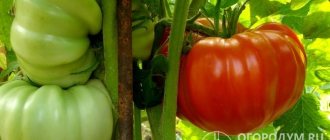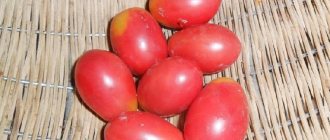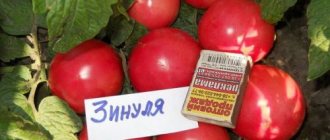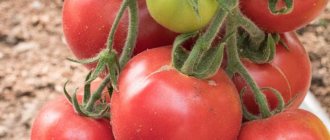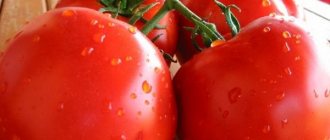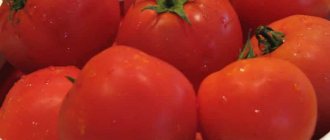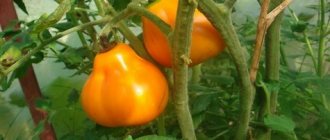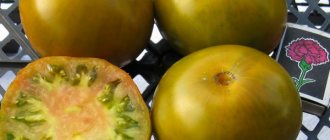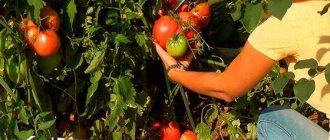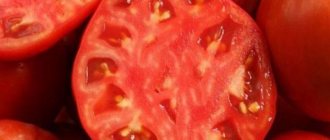Tomato Peach F1 is a tasty and unpretentious hybrid that has gained such popularity that breeders from different companies began to breed additional subspecies of different shades and with different characteristics. However, all Peaches have excellent taste and aroma.
| Height | Landing location | Ripening time | Fruit color | Fruit size | Origin | Fruit shape |
| short | Greenhouse, Open ground | Early ripening | Orange | Average | Hybrid | Round |
Description of Peach tomatoes
Despite the fact that the color of Peach tomato fruit varies depending on the subspecies, a number of features can be identified that are common to all varieties:
- these are plants of indeterminate type;
- the Peach tomato belongs to the category of tall tomatoes - the height of the bushes ranges from 90 to 180 cm;
- plant stems are powerful and strong;
- the bushes are not standard, which implies the need for their formation and pinching;
- the foliage is dark, reminiscent in appearance of potato leaves;
- the root system is well developed;
- each cluster produces an average of 6 fruits;
- the stalk is strong, which means that the tomatoes do not fall off the bushes;
- tomatoes of all subspecies belong to the mid-season category;
- Yield indicators are average;
- ovaries on the bushes are formed even under unfavorable weather conditions;
- plants have good immunity to many diseases.
Description of fruits
There is no ribbing on the fruits of all varieties of the Peach line - tomatoes can have a round or slightly elongated shape, resembling a radish or lemon in appearance, but their surface is always smooth. The skin of Peach tomatoes is slightly rough and velvety, which is due to the presence of soft fibers that are practically not felt when eaten.
Tomatoes cannot boast of size - the average weight of the fruit varies from 100 to 150 g. The taste is sweet, without acid, but with a pleasant fruity aftertaste. Reviews often emphasize the similarity of the tastes of Peach tomato and melon.
The fruit pulp is very juicy, with a minimal percentage of dry matter.
conclusions
Tomato Peach is a great option for those who are just starting to be interested in gardening and are trying to grow their own vegetables. This unusual tomato is also suitable for those gardeners who are looking for something original and unconventional. Of course, the Peach tomato is not the variety that is planted across the entire plot; a dozen bushes are enough to enjoy the unusual fruits. Peach is definitely worth a try for those who grow tomatoes for sale - the unusual fruits will definitely interest buyers.
Tomato Pink Peach F1 is an excellent cocktail hybrid with incredibly tasty and beautiful fruits. They have sugary, sweet pulp; they are good for decorating various dishes.
| Height | Landing location | Ripening time | Fruit color | Fruit size | Origin | Fruit shape |
| Tall | Greenhouse, Open ground | Early ripening | Pink | Small | Hybrid | With spout |
Variety varieties
Many varieties of the Peach tomato variety have been developed. They all have different colors and sizes of fruits, but they also have many common features - roughness of the skin, medium fruit, early or medium ripening.
Important! All subspecies are best consumed fresh, as Peach tomatoes do not last long.
Tomato pink Peach f1
This is an unusual cocktail hybrid with pink fruits, whose shape resembles a cross between a peach and a radish. The variety produces small fruits, their weight rarely reaches 45 g. From 14 to 20 tomatoes can hang on one cluster.
A distinctive feature of the variety is resistance to nematodes.
Tomato orange Peach
The Orange Peach tomato is considered the largest-fruited in the line - its fruits reach a weight of 160-170 g. It ripens quickly, in 80 days. Resistant to low temperatures and diseases. Well kept.
Tomato Golden Peach
Large-fruited variety with rich yellow fruits. The shape of the tomatoes is slightly elongated, with a pronounced “spout” at the end.
Up to 8 fruits are usually formed on one brush. The average weight of tomatoes reaches 150 g.
Red tomato Peach
This variety is very similar in appearance to the Pink Peach tomato. Its fruits also have an unusual pointed “nose”.
The subspecies is mid-season - harvesting occurs on the 115th day.
Tomato yellow Peach
This cocktail subspecies produces small fruits ranging from 40 to 50 g. The color of the tomatoes is a pleasant yellow color with an orange tint. The variety is usually placed on fertile, light, neutral soils.
Reviews from gardeners
Valeria, Krasnodar: “Many of my friends are disdainful of the variety because of its unusual shaggy appearance, but I personally like it. The peel is not hard, not bitter and does not prick. Tomatoes taste great, my family loves to eat them straight from the garden and without any preparation or additives.
The pulp of tomatoes is sweet, somewhat reminiscent of the fruit of the same name. This is probably why the variety is called Peach. I grow tomatoes in a greenhouse. The record height of the bush was about 170 cm. The harvest was quite enough.
Konstantin, Rostov: “The first time I saw these tomatoes was in a neighbor’s garden bed. Because of the white coating, they seemed unattractive to me, but my wife insisted on trying them. We took several fruits from our neighbors, prepared a salad, we really liked the taste of the tomatoes, and we asked for the seeds.
Only later did I find out that the white coating is not a disease or dust, but simply a feature of the variety, because it’s not for nothing that they call it Peach. What I liked about growing tomatoes is that they turned out to be the most resistant to damage by various parasites throughout the summer.
In addition, bushes with fruits look quite unusual. I consider the disadvantage of tomatoes to be their relatively small yield. We got 6-8 fruits from each cluster, although our neighbor had much more. They probably did something wrong, I’ll try again.”
Maya, Volgograd: “My mother has been growing peaches for a long time. I didn’t want to try for a long time, but I finally decided. I chose the Blove Sutton subspecies for testing and was not mistaken: the bushes grew tall, as stated in the photo on the package with seeds.
Tags: description, peach, pink, variety, tomato, characteristics
About the author: admin4ik
« Previous entry
Characteristics of tomato
Tomatoes of the Peach variety are classified as medium-yielding, which is often considered its disadvantage, but this characteristic is compensated by the tomato’s hardiness, good immunity and versatility in the use of the fruit. In addition, an undoubted advantage is the possibility of growing the variety in most of the Russian Federation, which is due to the good frost and heat resistance of Peach tomatoes.
Productivity and fruiting
The Peach tomato is an early-ripening variety - the fruits ripen approximately 85-90 days after the first shoots appear. The yield of the series is average - at best, you can harvest 3 kg of tomatoes from one bush, usually less.
Advice! You can increase the yield of tomato by forming bushes with 2-3 stems.
Area of application of fruits
Despite the fact that the Peach tomato variety is recommended primarily for fresh consumption, the fruits are also suitable for whole-fruit preparations, which is explained by their small size. In addition, the fruits are often processed into pastes, juices and baby food.
Peach tomatoes are stored for a relatively short time, so they do not tolerate transportation over long distances.
Resistance to diseases and pests
Tomatoes of the Peach line are resistant to a number of diseases typical of tomatoes:
- root rot;
- powdery mildew;
- late blight;
- spotted mosaic;
- white rot;
- gray rot.
In addition, all Peach tomato varieties, without exception, are not afraid of aphids, spider mites and mole crickets.
Advantages and disadvantages of the variety
The advantages of the variety include:
- exotic appearance of the fruit;
- sweet taste without sour notes;
- unpretentiousness;
- relatively high frost resistance;
- resistance to most diseases typical of tomatoes;
- wide regionalization;
- stable fruiting regardless of weather conditions.
No obvious shortcomings have been identified in the Peach tomato variety, however, many gardeners in the reviews are disappointed with its supposedly low yield. This is explained by unreasonably high expectations, nothing more, since the Peach tomato was not initially created as a high-yielding variety. Relatively low transportability is also sometimes considered a disadvantage of Peach tomatoes.
Growing rules
The agricultural technology for growing tomatoes from the Peach line is not much different from the technology for planting most other varieties. The variety is quite unpretentious, so caring for it does not go beyond standard procedures - all it needs is timely watering, periodic fertilizing and weeding.
Planting seedlings
Before sowing seeds, it is necessary to disinfect them in a weak solution of manganese or any other disinfectant. After this, they are thoroughly washed to remove any remaining manganese and germinated in a flat container under damp gauze.
The hatched seeds are mixed into ready-made industrial soil or a self-prepared soil mixture, which should include fine-grained sand, humus and turf soil. There is no need to bury the seeds; at most, you can press down the planting material by 1 cm.
Water the seedlings with warm water, being careful not to get it on the leaves. Plants dive with the appearance of the first pair of leaves. Transplanting into individual containers promotes active root growth, stimulating their branching.
Tomato transplant
With the appearance of the 4th pair of true leaves, the seedlings are moved to open ground or a greenhouse. This usually occurs 50 days after sowing the seeds. When choosing a site for planting, you should focus on well-lit areas.
Advice! It is better to plant seedlings in the evening hours, when the sun is not so hot.
Since tomatoes from the Peach series are quite compact, an average of 3-4 bushes are planted per 1 m2, and it is better to stick to a checkerboard order. The distance between two adjacent holes should be at least 40 cm. The row spacing should be at least 60 cm, otherwise access to the plants will be difficult.
Before planting the seedlings, the holes are sprinkled with mineral fertilizer or organic matter, but the roots of the plants should not come into contact with them - the top fertile layer of soil is additionally laid on top of the fertilizer layer. Only after this can the seedlings be buried.
Immediately after planting, it is necessary to carry out the first watering.
Important! If the soil temperature is below –15°C, it is recommended to cover the young seedlings with film. Remove the cover gradually so that the tomatoes can get used to the new temperatures.
Subsequent care for tomatoes
All varieties of the Peach series are considered quite unpretentious, however, minimal care is required even for such crops.
Water the bushes infrequently, but generously and at the root. In this case, you should focus on weather conditions. To better retain moisture in the soil, it is recommended to mulch tomatoes with sawdust.
When growing Peach tomatoes in a greenhouse, you need to ensure good air circulation in it and regularly ventilate the shelter.
It is not necessary to feed the plants, but tomatoes from the Peach series respond well to soil enrichment. Any homemade and industrial fertilizers, both organic and mineral, are suitable as fertilizing. When the fruits begin to form, stop feeding.
Peach tomatoes are tied only if the shoots produce a large number of fruits and there is a risk of stem breaking. The variety does not require pinching.
Advice! If fruiting is abundant, you can tie the tomato to a support on one side of the bush.
How to grow
There is nothing particularly difficult about growing tomatoes that resemble peaches - they are grown just like any other varieties.
A brief instruction-algorithm will help a novice gardener:
- The seeds are pre-soaked in a manganese solution or other disinfectant. Zetas need to germinate tomato seeds on a saucer under a damp cloth.
- After pecking, the seeds are sown in the ground. You can purchase a ready-made soil mixture for seedlings of tomatoes and peppers, or prepare it yourself from turf soil, humus and sand. Tomato seeds are not buried deep into the ground - maximum 1 cm.
- Water the tomatoes carefully so that water does not get on the leaves and stem. Water for irrigation is taken warm.
- Peach tomatoes should be picked at the stage of a couple of leaves. This stage is very important, since replanting stimulates the root system and causes it to branch.
- When the seedlings grow 7-8 true leaves, they can be planted in the ground or in a greenhouse. Usually by this time the tomatoes are already 50-60 days old.
- The Peach planting scheme is usual for determinants - 3-4 bushes per square meter. It is better to plant the bushes in a checkerboard pattern, leaving an interval of about 40 cm between adjacent tomatoes. Leave 70-80 cm between rows for easy care and watering of tomatoes.
- Mineral fertilizer, humus, compost or mullein are placed in each hole before planting. Sprinkle the fertilizer with a layer of soil, water it, then transfer the seedlings.
- If the ground is not yet warm enough (colder than 15 degrees), you need to use a film cover. The film is removed gradually so that the tomatoes get used to the air temperature.
- You can water the planted tomatoes only after a week, when they are stronger.
The best site for planting Peach tomatoes will be the place where carrots, legumes, zucchini or cucumbers grew last year. You should not plant seedlings where there were tomatoes or potatoes.
It is better to choose a cloudy day for planting seedlings, or to start growing tomatoes in the late afternoon, when the sun is no longer shining.
Tomato care
Peach is an unpretentious variety, but these tomatoes still require minimal care. In the process of developing culture you will need:
- Abundant, but not frequent watering. Water should be poured at the root so as not to wet the tomato leaves. Water the tomato early in the morning or after sunset.
- The greenhouse must be ventilated, and the edges of the temporary shelter must be raised.
- Every one and a half to two weeks, the soil under the tomatoes is fertilized with mineral complexes or organic matter. Stop feeding during fruit formation.
- The bush is formed into one stem; in the future, the stepsons are not cut off.
- If there are a lot of fruits and they are concentrated on one side of the bush, you will have to tie the tomato to a support or trellis. Usually the Peach tomato does not need staking.
- Although the variety is resistant to diseases, it is better to carry out preventive treatment of the bushes. This is done before the fruit ripens.
- It is better to mulch the soil between the bushes, so the moisture in the ground will remain much longer.
The first harvest of multi-colored Peaches is harvested at the end of July; fruiting of tomatoes continues until mid-autumn (weather permitting). In the southern regions or in a greenhouse, you can grow even two generations of this tomato variety.
Pest and disease control
Despite the fact that the variety is unattractive to pests and is rarely affected by diseases, it is recommended, for preventive purposes, to spray the bushes with insecticides and fungicides starting from the moment the ovary forms. The optimal frequency of spraying is 18-20 days.
Treating Peach tomatoes with iodine solution is also useful - it not only improves nitrogen metabolism and acts as a kind of replacement for nitrogen fertilizers, but is also an excellent preventative against late blight.
You can learn more about the features of processing tomatoes with iodine against late blight from the video below:
